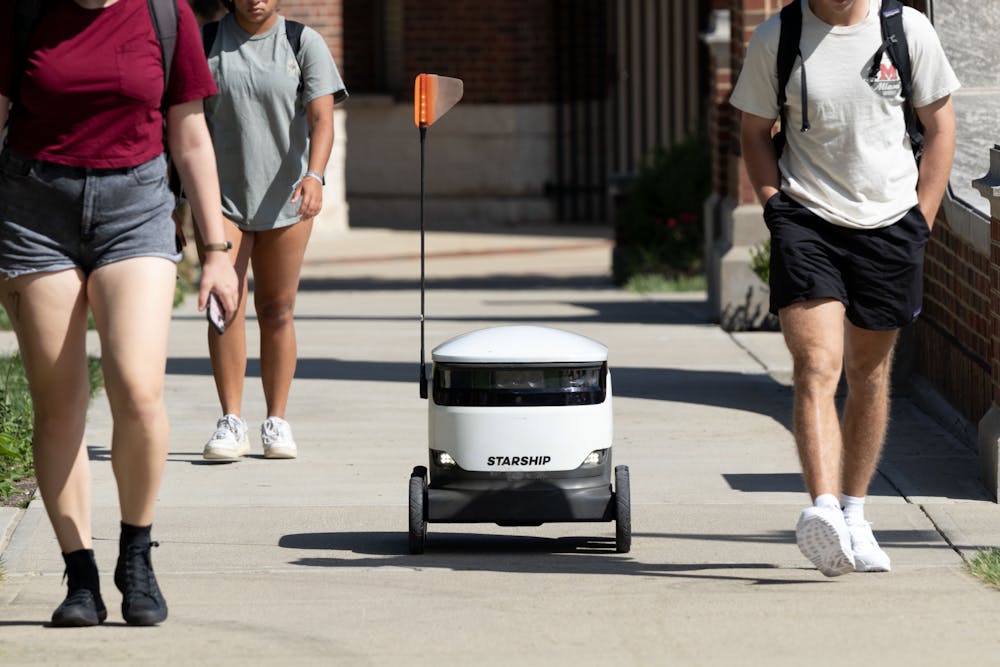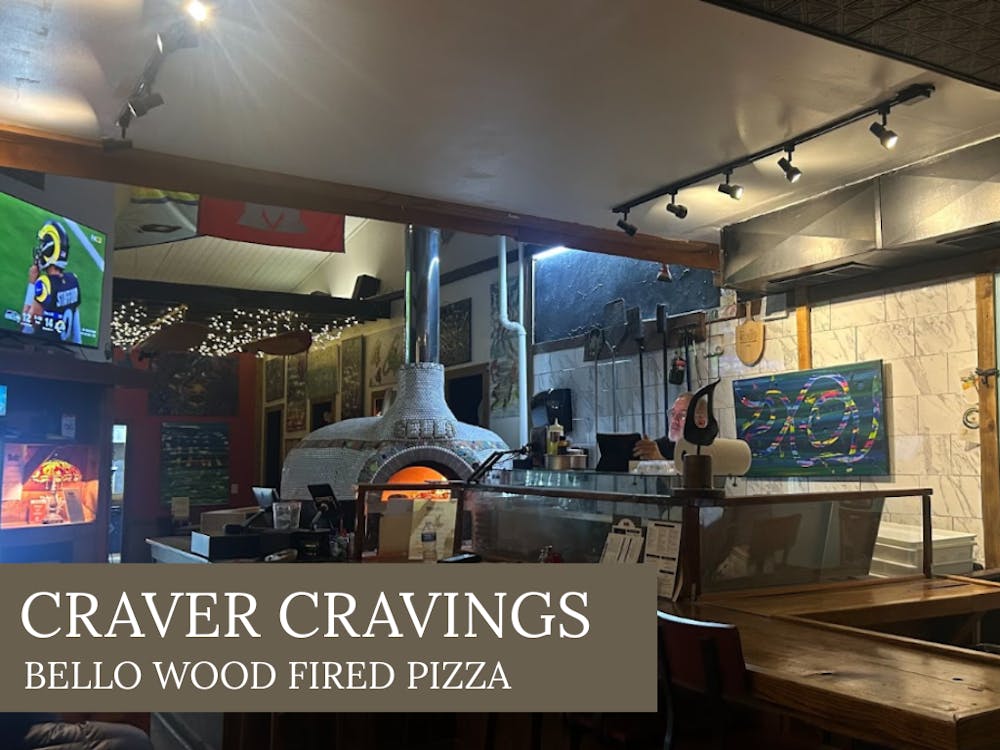Robots are taking over the world. Or, at least, Bell Tower Dining Commons.
This semester, Bell Tower serves as a guinea pig in a technology-forward experiment toward the future of campus dining: ghost kitchens.
A ghost kitchen is a dining model that seeks to provide efficient, contactless food transactions for consumers on-the-go. The model first emerged in the 1990s and has exploded in popularity since 2020 with an increase in demand for contactless food delivery and food pick-up options post-pandemic.
The rise of ghost kitchens comes at the same time that autonomous delivery robots are gaining popularity on college campuses. First seen in 2018 when Kiwibot launched a pilot experiment at University of California - Berkeley, the concept now extends to hundreds of college campuses.
Last fall, Grubhub and Starship Technologies partnered to implement ghost kitchen delivery systems on more than 270 college campuses, and it’s coming to Miami University this semester.
To use Bell Tower’s new ghost kitchen, students can order food on the Grubhub app or on one of Bell Tower’s Grubhub kiosks. Students can use meal swipes to purchase to-go combos from any of Bell’s three ghost kitchen concepts, as well as declining dollars to order from the soon-to-be Bell Tower Starbucks, opening later this semester.
Once an order is placed, students may either request to have their food delivered by a robot or pick it up themselves in one of Bell Tower’s food lockers, which use mobile devices for a 100% contactless transaction.
“We are eagerly looking forward to reintroducing Bell Tower to the Miami community, showcasing its technology and providing a truly exceptional dining experience for all,” wrote Aramark marketing manager Christian Wallace in an email to The Miami Student.
The ghost kitchen model, if successful, will provide new and never-before-seen food accessibility: a service that will be especially useful for students with disabilities and students with busy schedules. Bell Tower will become “the main hub for on-the-go dining options,” Aramark envisions.
However, the transition to a ghost kitchen raises some concerns about the future of on-campus dining and the impact robots will have on our campus.
For me, food is about connection: talking about my favorite foods with the dining hall workers, enjoying a group brunch at noon after a Friday night out, chatting with the Emporium cashiers about the new candy I’m going to try.
When we replace in-person dining models with ghost kitchens, we sacrifice human connection for brute convenience, prioritizing quickness over mindfulness and output quantity over human creativity.
Enjoy what you're reading?
Signup for our newsletter
At the same time, when students are rushing to meet an 11:59 p.m. deadline or trying to find a bite to eat in a 15-minute class break, a ghost kitchen provides students the ultimate accessible, convenient dining experience.
“I will absolutely love the food lockers as long as there aren’t issues with overcrowding, lack of pickups or exorbitant delays. The lockers will be a life saver for me if they work as intended because I have only 15 minutes in-between classes for a full day this semester,” junior biochemistry and music performance major Cecelia Meinking said.
By far the most noticeable change Bell Tower will bring to our campus is the presence of robots on our sidewalks and intersections. To many, the Starship robots are, well, adorable. To others, the use of robots creates skepticism. Will robots really be able to reliably deliver food? How on earth do they know where they’re going?
Starship zero-emission robots have made over 4 million successful autonomous deliveries, operated by artificial intelligence, computer learning and sensor systems that guide the robots around obstacles.
“The computer vision-based navigation helps the robots to map their environment to the nearest inch. The robots can cross streets, climb curbs, travel at night and operate in both rain and snow,” Starship Technologies wrote in a press release earlier this year.
Unfortunately, the biggest risk to robot delivery systems is the threat of vandalism from students.
At East Carolina University, several Grubhub-Starship robots were vandalized and tossed into streams this February after the introduction of robots to their campus. Similar incidents have occurred with Starship robots at James Madison University and the University of Tennessee.
However, Starship has built-in features to deter vandalism and property destruction. Robots are locked during transport and can only be opened by the student’s app or the dining staff.
If a robot is attacked or tampered with, do not fear: Starship has a team of “robot rescuers.”
“The robots are constantly monitored and equipped with 12 cameras and two-way audio communication systems. Any improper conduct will be detected immediately. If an incident does occur with a Starship robot, one of our robot rescuers can respond quickly,” Starship Technologies wrote on its website.
For incoming students and returning students alike navigating the transition to new dining options, all dining locations, hours of operation and menus can be accessed online at miamioh.edu/dining.
Grubhub is also offering students a discount as they try out the new Grubhub dining options: the code NOMS gives Miami students $3 off their first on-campus pickup order of $7 or more.




